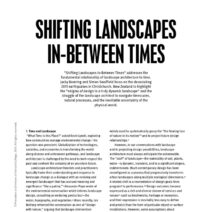Humanity has long held a fascination with the natural world. From the majestic elephants that roam the savannahs of Africa to the colorful coral reefs that teem with life beneath the waves, the biodiversity of our planet has captivated scientists and nature enthusiasts alike. However, this vibrant tapestry of life is unraveling at an alarming rate, with climate change emerging as a critical threat to global biodiversity. The intricate balance of ecosystems is being disrupted, leading to the vanishing of species at an unprecedented pace.
Climate change, predominantly driven by human activities such as burning fossil fuels and deforestation, is causing shifts in temperature and precipitation patterns. These alterations have far-reaching consequences for organisms that rely on specific climate conditions for their survival. Many species find themselves unable to adapt quickly enough to these rapid changes, leading to increased mortality rates and shrinking populations. The Intergovernmental Panel on Climate Change (IPCC) reports that as much as one million species face extinction in the coming decades if current trends continue. This catastrophic loss of biodiversity is not merely an environmental issue; it is a harbinger of dire socio-economic implications for humanity.
One profound observation in this crisis is that the most vulnerable species often inhabit specialized ecological niches. For instance, polar bears are profoundly affected by the melting ice in the Arctic, which not only diminishes their hunting grounds but also disrupts their breeding cycles. Such species, with their unique adaptations and narrow ecological requirements, are particularly susceptible to climate-induced changes. Additionally, plants and animals that exhibit low reproductive rates or restricted ranges are at significant risk. The extinction of these species can ripple through ecosystems, affecting predators, prey, and even plant life.
The impact of climate change on biodiversity goes beyond observable declines in wildlife populations. It invokes deeper ecological ramifications, disrupting intricate relationships that have evolved over millennia. Ecosystems are characterized by a web of interactions among species, from predator-prey dynamics to symbiotic relationships between plants and pollinators. As temperature rises and habitats transform, these relationships can falter, leading to cascading effects. For example, the decline of bee populations due to changing climates threatens the pollination of numerous plant species vital for human sustenance and ecological balance.
Furthermore, climate change is not an isolated phenomenon; it interacts with other global stressors such as habitat destruction, pollution, and invasive species. Deforestation for agriculture and urbanization, coupled with rising temperatures, exacerbates the challenges faced by many species. Fragmented habitats restrict migration routes, leaving populations stranded and unable to seek cooler environments. Such compounded pressures hinder the resilience necessary for species to adapt, ultimately pushing them closer to the brink of extinction.
In examining the implications of vanishing species, one must also consider the intrinsic value of biodiversity. Ecological diversity underpins essential services that sustain human life, such as clean air, water purification, and food security. The loss of a single species can lead to a diminishment of these services, with grave consequences for human health and well-being. For instance, the disappearance of diverse fish species can collapse marine ecosystems, diminishing fish stocks that communities depend on for livelihood and sustenance.
Moreover, certain species have unique roles in their ecosystems known as “keystone species.” These organisms hold disproportionate influence over their environments, maintaining the structure of ecological communities. The removal of a keystone species can trigger a domino effect, leading to habitat degradation and further species loss. Consider the role of sea otters in kelp forest ecosystems: their predation on sea urchins prevents these herbivores from overgrazing kelp, a vital habitat for countless marine organisms. Diminished sea otter populations due to climate change and pollution threaten the health of entire underwater ecosystems.
Safeguarding biodiversity in the face of climate change demands robust conservation efforts and innovative strategies. Protecting critical habitats, implementing sustainable land-use practices, and investing in the restoration of degraded ecosystems are essential steps toward preserving biological diversity. Additionally, intergovernmental cooperation to reduce greenhouse gas emissions is crucial for mitigating climate change impacts. Transitioning to renewable energy sources and promoting energy efficiency can curtail the anthropogenic drivers of climate disruption, ultimately benefiting both human societies and ecosystems.
Public awareness and involvement are vital to addressing the biodiversity crisis. Engaging communities in conservation initiatives fosters a sense of stewardship and responsibility toward the natural world. Educational programs that highlight the importance of biodiversity and the threats posed by climate change can inspire individuals to take action at local and global levels. From planting trees to supporting sustainable agricultural practices, collective action can make a significant difference in alleviating the pressures on vulnerable species.
In conclusion, the vanishing of species due to climate change is a poignant reminder of the interconnectedness of life on Earth. The delicate balance of ecosystems is at risk, and the ramifications extend beyond the natural world into every facet of human existence. Acknowledging the intrinsic value of biodiversity and acting urgently to mitigate climate change can pave the way for a more sustainable future. By fostering an ethic of care for our planet, we can aspire to preserve the rich variety of life that defines our home, ensuring that future generations inherit a world teeming with vitality and wonder.



